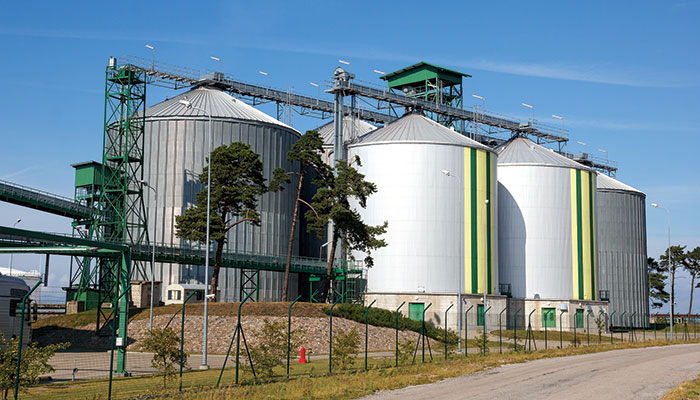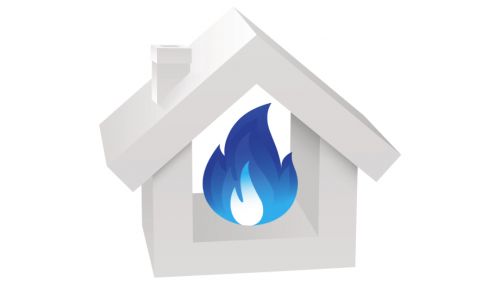All
New Factors Drive Biodiesel Economics
by Michael Devine, AMERIgreen Energy

Isn’t it ironic? Who would have thought that San Diego, Calif., would serve as the backdrop and play host for an ASTM vote that would change the future of home heating oil forever?
Voted on and approved is a new higher percentage biodiesel blend grade, included in the current ASTM-D396 heating oil specification. Accepted by an overwhelming vote on the ASTM main committee on December 11, 2014, biodiesel blends of B6 to B20 will now reaffirm what some distributors have maintained all along, that B20 heating oil blends are a superior heating fuel to deliver to their customers.
So what does a B20 specification mean to the industry? From a purely technical standpoint, the new D396, B6-B20 grade fuel contains all the same parameters with the same limits as the existing D396 heating oil specification. The criteria and elements for testing in ASTM D396 specifications like viscosity, flash point, carbon residue, ash content, pour point, and so on are exactly the same for the new B6-B20 grade.
In addition to the standard parameters, the B6-B20 grade also adds two properties (acid number and oxidation stability), which provide additional assurance that the biodiesel blends maintain adequate stability in storage tanks. The new ASTM D396 grade provides the quality assurances to the heating oil marketer that the B6-B20 biodiesel blends will perform at a high level, and the oil heat consumer will be able to consume a greater percentage of renewable energy in their homes and businesses.
Renewable Fuel Standard & Renewable Volume Obligations
There are several factors that affect the economics of the biodiesel gallon throughout a calendar year; one such factor is the statutory use requirements of renewable fuels through the Renewable Fuel Standard (RFS). On May 29 the EPA finally provided the renewable fuels markets with proposed Renewable Volume Obligations (RVO) for years 2014 through 2017 under the Biomass Based Diesel category. Under the new proposed standards, EPA has evaluated the availability of qualifying renewable fuels and has also considered the ability of the market to respond to the applicable standards by producing changes in production, infrastructure, and relative pricing to boost the use of renewable fuels.
In particular, the proposed volumes would ensure continued growth in advanced biofuels, which have a lower greenhouse gas emissions profile than conventional biofuels. EPA is also proposing to increase the required volume of Biomass-Based Diesel categories in 2015, 2016, and 2017 while maintaining the opportunity for growth in other advanced biofuels that are needed over the long term.
Volumes Used to Determine the Proposed Percentage Standards Under the Biomass-Based Diesel Category.
2014 Proposed RVO = 1.63 Billion Gallons
2015 Proposed RVO = 1.70 Billion Gallons
2016 Proposed RVO = 1.80 Billion Gallons
2017 Proposed RVO = 1.90 Billion Gallons
As we move into the next three heating seasons the biodiesel marketplace can count on minimum production levels that are easily attainable given the current U.S. production capacity. The increased volumes in the Biomass Based Diesel and Advanced Biofuels categories also enable these renewable fuel markets to function with some rational fluidity, as opposed to the uncertain abyss that they have been operating under for all of 2014 and much of 2015.
RVO Foreign Import Pathways
The final releases of the Renewable Volume Obligations were not the only big event that rocked the biodiesel world in 2015. After an extensive review process, EPA has approved a plan submitted by a consortium of Argentinean renewable fuel producers (Camara Argentina de Bio combustibles, CARBIO) to demonstrate compliance with U.S. Renewable Fuel Standard (RFS) regulatory requirements. The plan satisfies one aspect of the RFS, which requires importers to keep records that demonstrate that the feedstocks used to produce the fuel come from qualified land. CARBIO’s plan includes a robust tracking program that requires an independent third party to conduct an annual survey of the entire biofuel supply chain, from soybean production through intermediate processing, to biodiesel production. This approved plan enhances existing regulatory oversight requirements currently applied to qualifying renewable fuels being imported from Argentina. (Source: EPA)
The EPA has approved a policy change that will allow Argentinian biodiesel to qualify under the Renewable Fuel Standard—a move that the National Biodiesel Board said would compromise the policy’s goal of providing “clean, homegrown” fuel. It’s still to be determined from a market perspective how this new Argentinian biodiesel pathway approval may or may not impact the overall economic pricing model of biodiesel in the coming heating season, specifically benchmarked against the pricing of the U.S.-produced biodiesel gallon. If the arbitrage door does in fact open for the Argentina biodiesel gallon in the coming months, how long might it be open?
Tax Incentives and Credits
The imported biodiesel arbitrage door could shut swiftly during the heating season based upon a recent move to change the Federal Biodiesel Blenders Tax Credit (BTC) to a Biodiesel Production Tax Credit (PTC), starting on January 1, 2016. Recently, the Senate Finance Committee passed a tax extenders package that includes two-year extensions of tax credits for biodiesel, renewable diesel and cellulosic biofuels. The bill would extend incentives for biodiesel and renewable diesel for two years, through 2016. The extension would apply to the $1-per-gallon credit for biodiesel and renewable diesel.
The success of San Diego served to change the heating oil landscape and create a new and more sustainable future for biofuels. Clearly, there has been and will continue to be a lot of moving parts in the biodiesel markets as we advance into the 2015-16 heating season and we only touched on a few in this article.
Please feel free to contact me with any questions or feedback regarding this or any articles at mdevine@amerigreen.com or call me at 203-221-3044. As we move into this next heating season and the landscape changes, we can help define this transition making a better and more effective platform. This topic will be the subject of our next article entitled Bioheat® 2.0, where we will share our perspectives and lessons learned with the hope of providing the biodiesel distributor with a template on how to build a ratable platform for increased margins and customer loyalty.
Related Posts
 The Possibilities of Renewable Propane
The Possibilities of Renewable Propane
Posted on March 13, 2024
 Propane Can Do That
Propane Can Do That
Posted on March 12, 2024
 Take Action and Take Control of Your Future at Industry Summit VI and Visions ‘24
Take Action and Take Control of Your Future at Industry Summit VI and Visions ‘24
Posted on March 11, 2024
Enter your email to receive important news and article updates.

